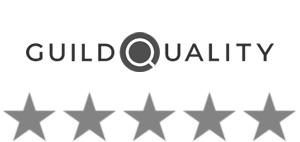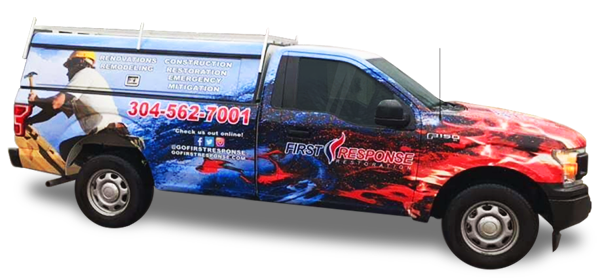Experiencing a house fire can be a devastating and traumatic event. In addition to the damage caused by the fire itself, there are also post-blaze hazards that can pose serious health risks to individuals living in or near the affected property. It’s important to understand the potential risks associated with post-fire toxins and take proactive steps to ensure the safety of yourself and your loved ones.
When assessing the level of toxicity in a house after a fire, it’s essential to consider the various types of contaminants that may be present. Smoke and soot can contain a range of harmful substances, including carbon monoxide, volatile organic compounds (VOCs), and heavy metals. In addition, chemicals from fire-retardant materials and cleaning agents can also contribute to the toxicity of a fire-damaged property.
It’s critical to take the necessary precautions when cleaning and restoring a fire-damaged house. Without proper cleaning and remediation processes, individuals may experience adverse health effects such as respiratory problems, skin irritations, and other health concerns.
Key Takeaways:
- Post-fire toxins can pose serious health risks to individuals living in or near a fire-damaged property.
- Smoke, soot, and chemicals from fire-retardant materials and cleaning agents are common sources of contamination.
- Failure to properly clean and remediate a fire-damaged house can result in respiratory problems, skin irritations, and other adverse health effects.
- It’s crucial to take proactive steps to ensure the safety of yourself and your loved ones.
- Consulting with certified professionals and following proper cleaning and remediation processes can mitigate the health risks associated with post-fire toxins.
Assessing Fire-Related Contaminants in a House
After a fire, your house may be contaminated with various fire-related contaminants that can pose serious health risks. These contaminants include smoke, soot, and chemicals that can be harmful to both humans and pets.
Smoke: Smoke can leave behind microscopic particles that can penetrate your walls, floors, and ceilings. These particles can cause respiratory problems, eye irritation, and other health issues.
| Health Issues | Smoke Type |
|---|---|
| Respiratory problems, eye irritation, and headaches | Black or brown smoke |
| Cancer and other long-term health problems | White or gray smoke |
Soot: Soot is a black, oily substance that can coat surfaces and cause respiratory problems, especially for those with preexisting conditions such as asthma or heart disease.
Chemicals: Chemicals can be released during the fire, either from burning materials or from firefighting efforts. These chemicals can be toxic and can cause serious health problems if inhaled or absorbed through the skin.
It is essential to assess the extent of contamination in your house after a fire. Doing so will help determine the appropriate cleaning and remediation processes necessary to remove these contaminants and minimize the associated health risks.
Health Risks of Post-Fire Toxins
Exposure to post-fire toxins can pose significant health risks to individuals. The contaminants released during a fire can linger in the air and on surfaces long after the flames have been extinguished, potentially leading to a range of adverse health effects.
Respiratory problems: Inhaling smoke and soot can cause respiratory issues such as coughing, wheezing, and shortness of breath. Prolonged exposure to these contaminants can even lead to more serious conditions such as chronic obstructive pulmonary disease (COPD) and asthma.
Skin irritations: Contact with post-fire toxins can cause skin irritations such as rashes and itching. These irritations may be mild or severe, depending on the level of exposure and the sensitivity of an individual’s skin.
Other adverse health effects: Exposure to post-fire toxins may lead to other adverse health effects such as headaches, dizziness, and nausea. In severe cases, it can lead to organ damage or even death.
It is important to properly clean and remediate a fire-damaged house to mitigate the risk of exposure to these harmful contaminants. Seeking professional assistance and following proper cleaning protocols can help ensure a safe living environment.
Evaluating Structural Damage and Safety Concerns
After a fire, it’s essential to assess the structural damage to your house to ensure the safety of everyone living in or near the affected property. Structural damage can compromise the integrity of a building, making it vulnerable to collapse or further damage. Therefore, it’s crucial to inspect the house’s foundation, walls, roof, and other structural elements for any signs of damage and stability concerns.
The most common types of structural damage caused by house fires include:
| Damage Type | Description | Safety Concerns |
|---|---|---|
| Collapsed Roof | The weight of water and debris can cause a roof to collapse, leading to severe injury or death. | Unsafe living conditions, especially if the roof is visibly sagging or showing signs of stress. |
| Warped or Cracked Walls | Intense heat can warp or crack walls, which can lead to further structural damage and make the house unsafe to live in. | Increased risk of collapse or further damage to the house, especially if there are visible cracks or bulges on the walls. |
| Compromised Foundation | The intense heat from the fire can weaken the foundation, leading to structural instability and safety concerns. | Increased risk of collapse or further damage to the house, especially if there are visible cracks or shifts in the foundation. |
If you suspect any structural damage, it’s essential to evacuate the house immediately and call a professional inspector to evaluate the damage and determine the necessary repairs. Attempting to assess and repair structural damage on your own can be dangerous and lead to further injuries.
In addition to structural damage, it’s crucial to inspect the house’s safety systems, such as smoke detectors and fire extinguishers, to ensure they are functioning correctly. If the fire damaged these systems, it’s essential to replace or repair them to provide adequate protection in case of future fire hazards.
Overall, evaluating the structural damage and safety concerns after a house fire is critical for ensuring the safety and well-being of everyone living in or near the affected property. Call for professional assistance and follow their guidance to prevent further damage and avoid any potential safety hazards.
Cleaning and Remediation Processes
When it comes to cleaning after a fire, it’s essential to take immediate action to prevent further damage and potential health hazards. The soot and smoke residue left behind can be harmful, and without proper cleaning, it can permeate the walls, furniture, and other household items. To ensure effective cleaning and remediation, it’s recommendable to hire professional services with experience in handling post-fire cleanup and restoration.
Professional cleaning after fire damage consists of several steps:
| Step | Description |
|---|---|
| Assessment | The first step is to assess the extent of the damage and identify what can be cleaned and what must be discarded. |
| Removal of Debris | The second step is to remove all the debris, including ashes, soot, and damaged household items. |
| Cleaning | The third step is to clean everything that can be salvaged, such as walls, floors, furniture, and other items, using specialized equipment and cleaning products. |
| Odor Removal | The fourth step focuses on removing the odor. Smoke can leave a strong smell that can be hard to remove, so professionals use air scrubbers and deodorizing agents to neutralize the smell. |
| Restoration | The final step is to restore the house to its previous condition. This may include repainting walls, replacing carpets or tiles, and fixing damaged electrical or plumbing systems. |
It’s important to note that the cleaning and remediation process varies depending on the extent of the damage and the type of contamination. For example, if the fire involved chemicals or hazardous materials, the cleaning process should be tailored to address these specific toxins.
Overall, properly cleaning and remediating a house after a fire can ensure the health and safety of individuals living in or near the affected property. Don’t hesitate to seek professional assistance to ensure the job is done thoroughly and effectively.
Testing and Inspection for Post-Fire Toxins
When it comes to assessing the level of contamination in a house after a fire, testing and inspection are crucial. Professional testing can provide accurate and reliable results, guiding the remediation process and ensuring that all toxins are properly addressed.
Several testing methods are used to identify post-fire toxins, including:
| Testing Method | Description |
|---|---|
| Surface sampling | Testing of surface materials to detect the presence of toxins such as lead, asbestos, and other hazardous chemicals. |
| Air sampling | Collection of air samples to measure the concentration of potentially harmful particles and chemicals. |
| Swab sampling | Sampling of specific areas for residue testing, such as carpets, upholstery, and walls. |
It is important to hire a certified professional to conduct post-fire inspections and testing. These experts have the knowledge and experience to identify potential hazards and recommend the appropriate course of action.
After testing is complete, the remediation process can begin. Remediation may include cleaning and removing contaminated materials, improving ventilation and air quality, and restoring the structural integrity of the house.
Preventive Measures for Future Fire Hazards
After experiencing a house fire, it’s natural to have concerns about future fire hazards. However, there are several measures that you can take to minimize the risk of such incidents occurring again. By following these preventive measures, you can ensure the safety of your home and prevent potential harm to your loved ones.
Fire Prevention Planning
One of the most effective ways to prevent fires is to have a fire safety plan in place. This should include identifying potential fire hazards in your home, establishing evacuation procedures, and ensuring that all occupants are familiar with the plan. You should also consider installing smoke detectors and keeping fire extinguishers in accessible locations throughout your home.
Regular Maintenance
Regular maintenance of your home’s electrical, heating, and cooling systems can help prevent fires caused by faulty wiring or equipment. It’s also important to keep your chimney clean and clear of debris, as buildup can increase the risk of a house fire. Additionally, be mindful of any flammable materials in your home, such as curtains, rugs, and bedding.
Safety Systems
Investing in safety systems can provide additional protection for your home and occupants. This can include sprinkler systems, fire-resistant roofing materials, and even home automation systems that can detect and respond to potential fire hazards.
Education and Training
Education and training on fire safety can go a long way in preventing future fire hazards. Consider attending fire safety workshops or organizing them for your community. Teaching children about fire safety can also help prevent fires from occurring.
By implementing these preventive measures, you can significantly reduce the risk of future fire hazards. Take action now to protect your home and loved ones from potential harm.
Conclusion
By understanding the potential hazards and health risks associated with post-fire toxins, you can take proactive measures to ensure the safety of your home and loved ones.
Assessing fire-related contaminants, evaluating structural damage, and implementing recommended cleaning and remediation processes are critical steps to mitigating health risks and restoring your property.
It’s also essential to recognize the significance of testing and inspection for post-fire toxins, as certified professionals can provide in-depth analysis and identify potential risks that may not be immediately apparent.
Lastly, by implementing preventive measures such as fire safety planning, regular maintenance, and the installation of safety systems, you can reduce the risk of future fire hazards and protect your property and well-being.
Overall, taking proactive steps to address the aftermath of a house fire can minimize the health hazards associated with post-fire toxins and ensure a safer living environment for you and your family.
FAQ
How toxic is a house after a fire?
The level of toxicity in a house after a fire can vary depending on several factors, such as the materials burned and the duration of the fire. Smoke, soot, and chemicals released during a fire can contaminate the air and surfaces, posing potential health risks to occupants.
What types of contaminants can be present in a house after a fire?
A house can be contaminated with various substances after a fire, including smoke particles, soot, chemical residues, and possibly asbestos or lead if present in the building materials. These contaminants can adversely affect indoor air quality and pose health hazards if not addressed properly.
What are the health risks associated with post-fire toxins?
Exposure to post-fire toxins can lead to respiratory problems, skin irritations, eye irritation, headaches, dizziness, and other adverse health effects. Individuals with pre-existing respiratory conditions or weakened immune systems may be more susceptible to these risks.
How does a fire impact the structural integrity of a house?
A fire can cause significant damage to the structural components of a house, compromising its stability and safety. This damage may include weakened supports, charred wood, and compromised electrical and plumbing systems. It is crucial to assess and address any structural concerns after a fire.
What are the recommended cleaning and remediation processes for a fire-damaged house?
Fire-damaged houses require specialized cleaning and remediation processes to effectively remove contaminants and mitigate health risks. It is advisable to seek professional assistance to ensure thorough cleaning, proper disposal of debris, and the use of appropriate cleaning techniques and equipment.
How can testing and inspection help identify post-fire toxins?
Testing and inspection conducted by certified professionals can help identify the presence and extent of post-fire toxins in a house. Various testing methods, such as air sampling and surface swabbing, can be employed to assess the contamination levels and guide appropriate remediation strategies.
What preventive measures can homeowners take to reduce future fire hazards?
To reduce the risk of future fire hazards, homeowners should develop and regularly update a fire safety plan, perform regular maintenance on electrical systems and appliances, properly store flammable materials, and install fire safety devices such as smoke detectors and fire extinguishers.

















